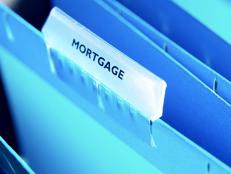Green Building Programs for Projects of Any Size
You're already planning to do the all the eco-friendly work on your new home: energy-efficient appliances, water-saving fixtures, the works. Why not work with your builder to make your home a certified green space? Here's how to get started on your path to a fully eco-friendly home.
Questions to Answer
Before getting started, define your reasons for going green. A good way to get going is to answer the following questions:
How much can you spend?
Are you willing to pay more for an environmentally responsible home? Unfortunately, applying energy-efficiency standards to the traditional building process may drive up the cost of building.
Though you'll spend more upfront, you'll recoup costs in energy savings over the lifespan of the house. You'll also find a higher resale value when you move. Determining your budget will define just how green you can go.
Where do you get a stamp of approval?
Is a certificate that proves your home is green an important validation for you? Some programs, such as Energy Star, offer certification. Others, including the National Association of Home Builders (NAHB)Model Green Home Building Guidelines, are more like "tool kits" that allow you to pick and choose options for green building.
Before signing on to any program, make sure you are comfortable with what you will -- or won't -- get when construction and inspection are complete.
Should you go local, regional or national?
More and more local green building programs are sprouting up all around the country, which can make getting involved in the movement quick and easy. Local programs offer resources close to home, but they might not have the same clout as nationally recognized programs. You'll need to decide whether it is important for your program to have name recognition with potential buyers, or if a home-grown program will suffice.
Once you have answered these questions, the next step is to pick the program that best suits your needs.
Getting with the program
Understanding the basics of green building programs is the best way to find one that will fit your green goals. The following is a list of a few national, regional, and local green building programs. Click the links for a brief description of their main objectives and how their programs work.
Developed in 2003, the NAHB Model Green Building Guidelines offer suggestions for builders in six main aspects of the building process: lot preparation and design; resource efficiency; energy efficiency; water efficiency/conservation; occupancy comfort and indoor environmental quality; and homeowner education. For each section, examples and suggestions are offered to help builders find solutions and options for incorporating green building methods, materials and technologies.
The NAHB added the National Green Building Program in February 2008, which offers a universal online certification tool. The national initiative links dozens of successful state and local green building programs, and will create a national registry of green homes.
Arguably the most recognized name in green building certification, the U.S. Green Building Council's (USGBC) Leadership in Energy and Environmental Design (LEED) certification program launched LEED for Homes in 2007.
Like the established LEED Green Building Rating System, a benchmark for commercial structures that use less energy, water and natural resources, LEED for Homes offers homebuilders a wide range of options to satisfy the three levels of the certification program: Silver, Gold or Platinum.
The USGBC also started the REGREEN program in 2008, which creates guidelines for green remodeling projects in existing homes.
While Energy Star has long been the standard for energy- and resource-saving home appliances, new buildings and single-family homes can also receive the Energy Star distinction.
Homes must meet Environmental Protection Agency guidelines and be at least 15 percent more energy-efficient than homes built to the 2004 International Residential Code (IRC). Additional energy-saving features can make them 20 percent to 30 percent more efficient than traditionally built homes, which can mean great savings in energy bills over the life of the home.
Specific areas that the program concentrates on are: effective insulation; high-performance windows; well-sealed ducts; efficient heating; and cooling equipment.
The final step to successfully building an Energy Star-rated house is that it must pass an inspection by an independent home energy rater to meet the EPA's guidelines for energy efficiency. When the home passes the final inspection, it is given the gold star brand found on Energy Star appliances. While not as aggressive as other green building programs, the brand recognition makes the program attractive for builders just getting started in green building.
Based in the Pacific Northwest, Earth Advantage has developed a comprehensive green building strategy that involves a six-step process to guide builders through the construction and certification of an environmentally responsible home:
- Plan review with an Earth Advantage specialist to review building plans.
- Determining materials and methods of construction to achieve energy-efficient goals while staying within budget.
- Ongoing consultation and educational support with builder and trades to provide technical support while the home is under construction.
- Periodic walk-throughs during the construction process to make sure installation of materials and appliances follows the guidelines.
- Performance testing during each critical stage of construction, including a forced-air system test to rate the air loss levels in ducts and an end-of-construction blower-door test.
- Certification of the home if the standards are met.
Earth Advantage offers the builder and the new homeowner a certificate of validation that signifies the home was built to the program's standards.
Originally established by the Greater Atlanta Home Builders Association, the EarthCraft House program has grown and expanded to become a leading source for green building certification in the Southeast. The voluntary program touts itself as a blueprint for healthy, comfortable homes that reduce utility bills and protect the environment. It now offers certification to builders in Alabama, South Carolina, Tennessee, Virginia and Georgia.
With a point-system approach to certification, the EarthCraft House program allows builders many energy-efficient and resource-conserving options in the home's design. Beyond just the house, the program takes into account jobsite waste, homeowner education, proximity to mass transit and even light pollution reduction. This flexibility accommodates projects of different sizes and styles looking for a green building program.
Before final certification is given, the home must score above a certain threshold on a scoring worksheet (similar to the LEED for Homes program) and must pass a final inspection by an EarthCraft House inspector.
Considered the most successful utility-based green building program in the United States, the Austin Energy's Residential Green Building Program provides a rating system for both new and recently remodeled homes. The program operates in the Austin, Texas, area and uses a five-star rating system to evaluate homes on sustainability. The more stars, the more environmentally responsible the home is.
Projects are evaluated in six areas: energy efficiency; testing (home performance); water efficiency; materials efficiency (recycling and waste reduction); health and safety; and community.
To join the program and start the process of having a home evaluated, the builder, designer or architect simply has to become a member of the program.














































